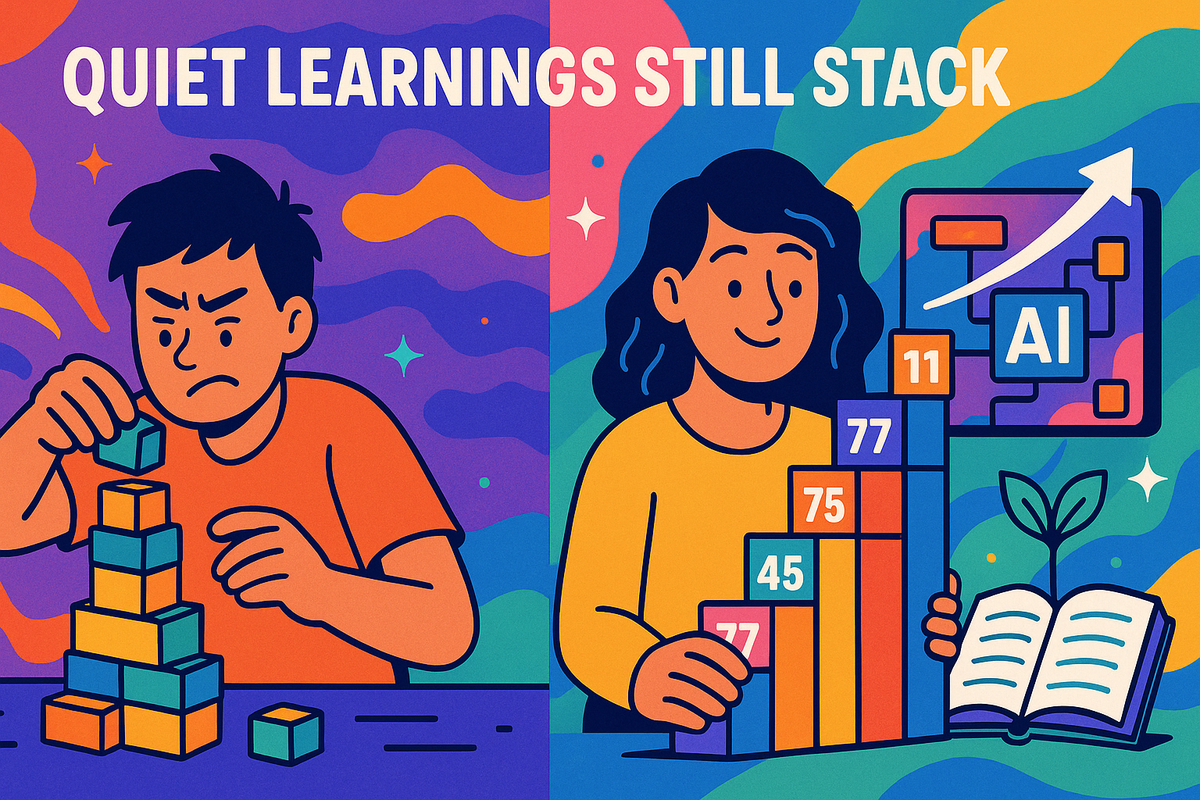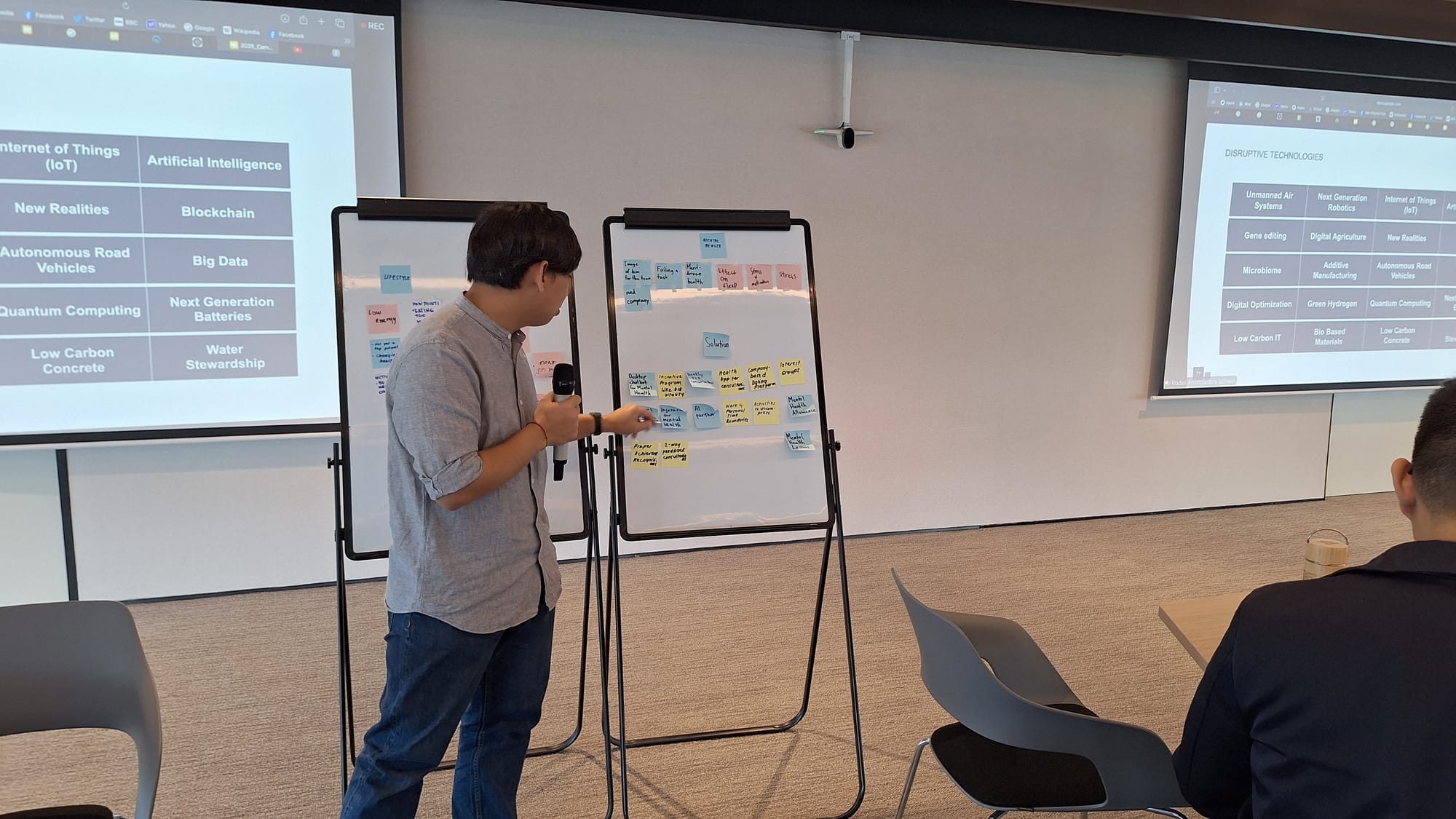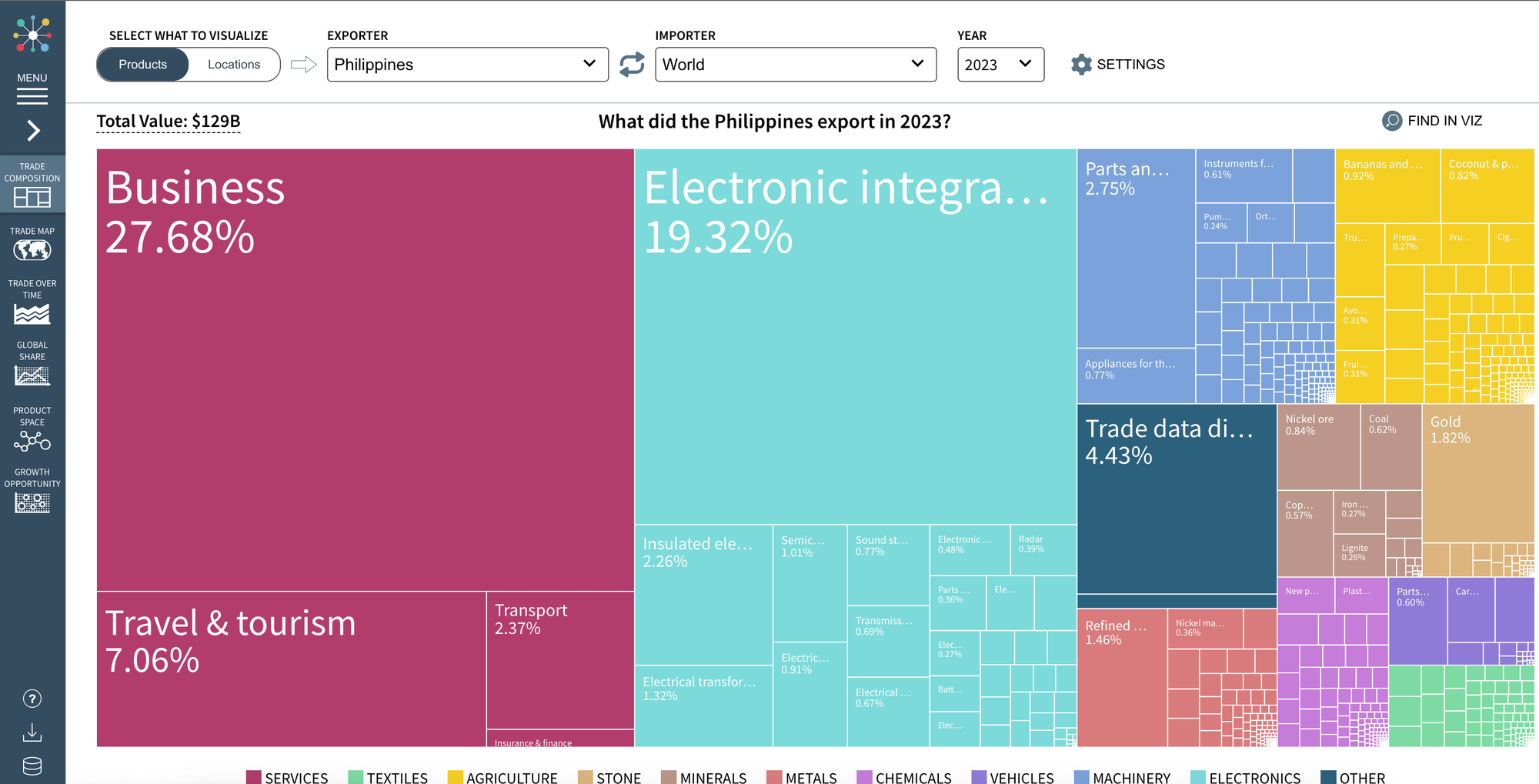How I Connected SDGs, the Atlas of Economic Complexity, and a YouTube Quiz Feed

Hi again, this is G — still building, still experimenting, and today? Still learning — even on what felt like a "quiet" day.
I used to think progress meant launching something or getting results right away. But today reminded me that even stillness can be productive. There wasn't a ton of output today — no flashy releases, no client handoffs, no automations launched. But the input? Solid. Deep, actually.
I realized how valuable these seemingly slow days are. They’re like the inhale before the next move. Parang you’re charging quietly before you hit publish again. And sometimes, that’s the real work — observing, absorbing, connecting dots, and thinking clearly about what moves next.
Even while facilitating, I was learning. Even while listening, I was mapping. Even while just crafting little quiz posts, I was watching the signals of what’s working. These moments — these silent refinements — they compound.
Here’s what stood out today, in case you’re also in a quiet stretch and wondering if it still counts. (Spoiler: it does.)
Learning from the SDG Workshop (Even as a Assistant)

I spent most of the day at the SDG Innovation Workshop in Makati, assisting in facilitation. It was a full-day event filled with industry leaders, facilitators, and corporate innovation teams. And even though I was technically part of the team leading the sessions, I ended up learning a lot myself. Sometimes being in the room is all it takes to spark something big.
The workshop focused on how businesses — especially large corporates — can create solutions that align with the UN Sustainable Development Goals (SDGs). We weren’t just talking about concepts. We were helping teams design tangible prototypes — systems that turn company waste into products, services, and even entirely new business lines.
What struck me was this: solution design is teachable.
Give people a structure, a canvas, a lens — and watch creativity unlock. Kahit di sila creative by trade, nabubuo nila ‘yung idea pag may framework.
And I couldn’t help but think: this is exactly the kind of thinking we need to bring to more Philippine SMEs. We often assume that innovation is reserved for startups with funding or tech companies with R&D budgets. But the truth is, any business — sari-sari store to regional agri-coop — can rethink how they deliver value using SDG frameworks.
Imagine if local furniture shops knew how to upcycle excess wood. Or food vendors could create side income from kitchen waste. The potential is massive. The challenge is: who’s teaching them to do that?
As someone who works with both corporates and solopreneurs, this made me reflect: maybe part of my role is to translate that innovation playbook into Taglish — for everyday founders. Because sometimes, all you need is someone to say, “Tara, try natin ‘to — may mas magandang paraan.”
The Atlas of Economic Complexity (Shared by My Mentor)
One of the best moments today was learning about the Atlas of Economic Complexity from my mentor, Ms. Diane Estaquio. And when I say learned — I mean na-curious ako sobra. It wasn’t just a chart. It was a reframe.

The Atlas is a data-driven tool that shows a country’s productive knowledge — based on what it currently exports and what it's capable of producing next. It visualizes what’s possible, not just what’s present. Ang galing niya kasi you can see where the opportunities are — not just for governments, but for small businesses and creators too.
The Philippines ranks lower not because we’re poor, but because we’re under-leveraged.
We’re exporting simple products when we could be climbing the complexity ladder.
And here’s where it got personal: this hit me hard. As someone building tools, writing prompts, and helping SMEs automate — what I’m creating matters not just to clients, but to the economic trajectory of the country. It sounds dramatic, but it’s real.
Every chatbot I build for a restaurant, every TikTok shop strategy I suggest to a crafter, every n8n workflow I customize — it’s not just convenience. It’s productive knowledge transfer. It’s how we move from selling basic goods to enabling smarter systems.
If we want to move beyond BPOs and banana exports, we need to create IP, build systems, and teach others to do the same. We need more local tools, Filipino-owned software, smart services that compound — not just hustle gigs that fade fast.
Even your no-code AI workflow is economic complexity in action.
Sobrang wild no? Parang bigla kang na-ground sa kung gaano kalalim ang effect ng ginagawa mo.
It made me think: what if more of us saw our builds that way — not just as projects, but as steps up the ladder?
This isn’t just data. It’s direction.
How Writing YouTube Quizzes Took Me from 77 to 145 Subs
On the content side, I’ve been posting YouTube Community quiz posts this week. Started with 77 subs. Now? 145 — without filming a single video. Sort of flex! LOOOL
And honestly? It’s fun. I enjoy crafting these questions. They feel like short puzzles — parang you're creating little learning moments with just one sentence and four options.
- Some are AI trivia like “What does GPT stand for?”
- Others are about automation tools — “Which of these is a visual no-code workflow tool?”
- Some just ask “What would you automate if you could?”
- Others are intentionally fun — “Which AI tool name sounds fake but is real?”
The trick? Make it useful, but also guessable. People like to test themselves, not feel dumb. If they feel smart just by trying — they engage.
This taught me something tactical:
- Small content formats (like quizzes) still build reach
- You don’t always need a big video production — just a smart idea
- Consistency compounds — YouTube remembers who shows up
- Engagement doesn't need to be deep — just real and consistent
- These quizzes open small feedback loops — people start commenting, voting, even DM-ing
It made me realize that simple content builds trust over time. And honestly, when you're building solo, that trust is gold. These quizzes are a surprisingly effective way to learn what your audience knows, wants, and enjoys — without needing to produce anything fancy.
Real talk: Content doesn't always need to go viral. It just needs to connect — and keep doing that over time.
🌱 Quiet Learnings Still Stack
So yeah — not a wild day of shipping or sprinting. But a solid day of inputs, patterns, and reframes. The kind of day where things settle in, where lessons simmer beneath the surface. Di man explosive yung progress, pero ramdam mo pa rin 'yung growth.
- I learned how to teach innovation better — lalo na pag may framework at story
- I connected my work to national economic growth — and saw how even small builds matter
- I grew my audience using low-effort, high-fun content — by simply showing up consistently
- I remembered the value of reframing quiet days — they’re not empty, they’re incubators
Not every day will be a sprint. But the seeds you plant today — they compound. They take root even when you’re not watching. And that’s what makes momentum feel sustainable.
What’s something you quietly learned this week?
Let me know. Maybe we’ll build from it together.
Till the next log,
– G